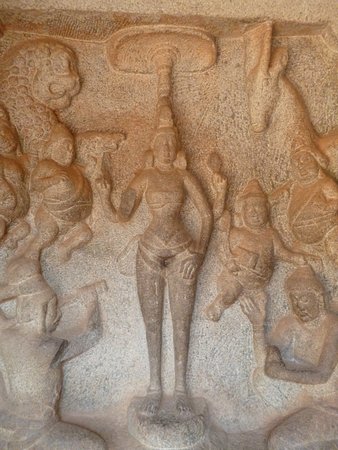Ancient Psychedelia: Alien Gods & Mushroom Goddesses
Online Book - Chapter 5, Page 61
Back to Online Book Mainpage / Next Page (Chapter 5, Page 62)
| Curiously, Shiva sometimes wears a crescent above his head, symbolizing his waxing and waning and Shiva also has a “third eye.” From a Hindu community website, on Shiva we read: “Besides these symbols another very important physical characteristic of Shiva is his Vertical eye - the third eye, because of which He is also called as Tri-Netr or Tri-Ambaka. In “Sri Shiva Tattva” this eye is described as: “the frontal eye, the eye of fire, it is the eye of higher perception. It looks mainly inward but whenever directed outward, it burns all that appears before it. It is by a glance of His third eye that Kama, the lord of love, was burnt to ashes and that the gods and all created beings are destroyed at each of the periodical destructions of the universe.” The third eye has implied wisdom and spiritual insight for thousands of years. (24) Shiva is also known as Bhasmabhuta, “Made of Ashes” and Shiva followers are known to cover themselves in ashes. When mushrooms finally disappear, there is nothing left but a type of substance which is similar to ash. (25) The sages of the Pine Forest are the sons of Brahma and are directly responsible for the castration of Shiva; but they are sometimes particularly designated as the Seven Sages, whose wives are seduced by Agni-Shiva. From the Brahmana Purana we read: “The sages said: Bard of great intellect, tell us more about the noble great god; we are eager to hear of his greatness. How did he enter the Pine Forest in which the bands of divine sages lived, changed his guise so that the intelligent great sages, who knew the great god were deceived and bereft of their wits? And how did they propitiate him to obtain his favor, when Bhava was not pleased with them? Tell us all. … Formerly, in the Krta Age, priests lived on an auspicious peak of Himalaya in a delightful pine forest full of various trees and vines. Many sages were practicing ascetism there, having taken the vows of sages: some ate nothing but moss; some lay down immersed in water, some had clouds as their only shelter. Some sat in a yogic posture on their hams, others took pleasure in living like wild animals. “Then the god came to that forest in order to show his grace to them. His body was pale with the ashes smeared on it; he was naked, and all his identifying marks were defaced; his hair was disordered and loose; he had enormous pointed teeth; his hands were busy with fire-brands, and his eyes were red and tawny. His penis and testicles were like red chalk, the tip ornamented with red and white chalk. Sometimes he laughed horribly; sometimes he sang, smiling; sometimes he danced erotically; sometimes he yelled again and again. As he was dancing, their wives became bewitched immediately and stood in his way as he came into the hermitage and begged for almas over and over again. His wife took a similar form, adorned with ornaments made of grass.” (26) |
Parvati is a mother goddess in Hinduism, and as such, she is a goddess of fertility. “Parvata” means “mountain.” Parvati is Shiva’s wife, and this makes sense, if Shiva is a mushroom. She is also the mother of Ganesha. Parvati’s earlier version, Sati, has her and Shiva both enjoying each other’s company on Mount Kailash. Brahma had to deal with his incestuous lust for his own daughter and was mocked for it by Shiva. In return, Brahma saw to it Shiva would be cursed by sexual passion, therefore his union with Parvati was necessary to insure the world would be given good favor. (27) Durga is the warrior form of Parvati, sometimes depicted riding a lion or tiger with a weapon in each of her many arms. Durga is a fierce, protective mother goddess who is central to Shaktism, where she first appears in the Devi Mahatmya, also known as Durgā Saptashatī, thought to have been composed between 400 and 600 AD. (28) Durga is pictured under a mushroom at the Varaha Cave Temple in Mahabalipuram, India, in a stele dated to 650 AD (19f). She creates through destruction, giving her a very patriarchal and male oriented persona.  (19f) Durga at Varaha Cave Temple in Mahabalipuram, India c. 650 AD (24) (https://www.livermoretemple.org/hints/content/asp/ deityInfo.asp?deityName=Shiva&menuID= &subMenuID=) (25) Magic Mushrooms in Religion and Alchemy (Formerly ‘Strange Fruit’-1995) Clark Heinrich, Park Street Press, Vermont, 2002, p. 38-44 (26) Hindu Myths, Translated by Wendy Doniger O’Flaherty, Penguin Books, Page 140-42 (27) (https://www.newworldencyclopedia.org/entry/Parvati) (28) Cheever Mackenzie Brown (1998). The Devi Gita: The Song of the Goddess: A Translation, Annotation, and Commentary. State University of New York Press, p. 77, note 28 |
Go Back to Page 60